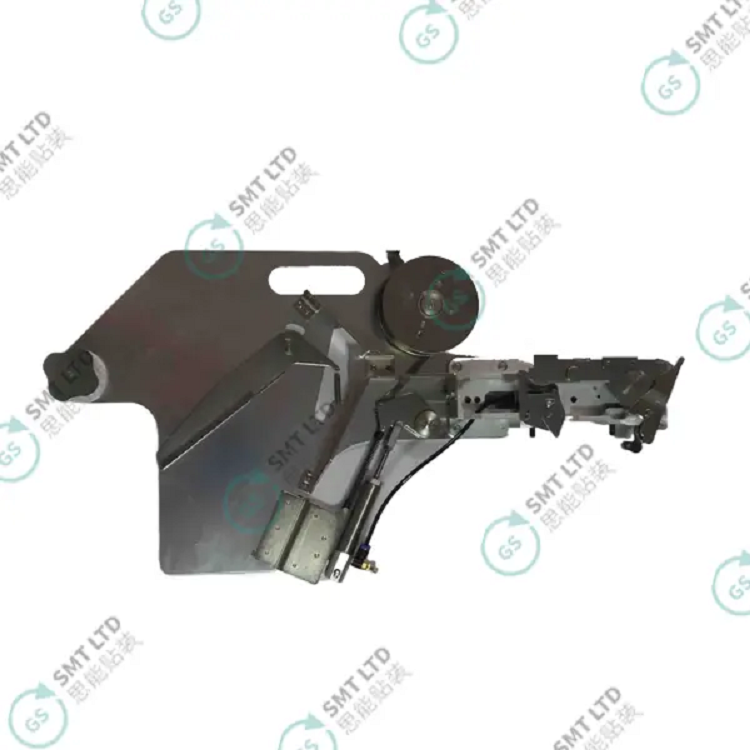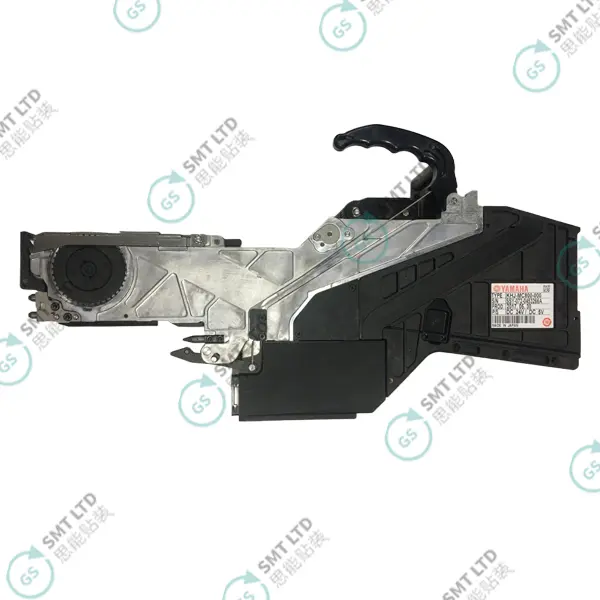
Main Features of YAMAHA Feeders
YAMAHA feeders are an integral part of Surface Mount Technology (SMT) production lines, playing a crucial role in the placement of components on printed circuit boards (PCBs). These feeders are designed to deliver components precisely and efficiently to the pick-and-place machines, ensuring high-speed, accurate assembly. This article explores the main features of YAMAHA feeders, highlighting their types, operational mechanisms, advantages, and their role in enhancing the productivity and reliability of SMT processes.
Overview of YAMAHA Feeders
YAMAHA feeders are designed to meet the diverse needs of modern electronics manufacturing. They come in various types, including electric feeders, pneumatic feeders, and tape feeders, each catering to specific requirements. These feeders are known for their precision, durability, and ease of use, making YAMAHA feeders manufacturer a preferred choice in the industry.
Types of YAMAHA Feeders
1. Electric Feeders
High Precision:Electric feeders are renowned for their high precision in component delivery, essential for maintaining the accuracy required in modern electronics.
Speed Control:These feeders offer precise speed control, ensuring consistent component delivery rates, which is crucial for high-speed production lines.
Reduced Maintenance:With fewer moving parts compared to pneumatic feeders, electric feeders require less maintenance, leading to lower downtime.
2. Pneumatic Feeders
Robust Performance:Pneumatic feeders are known for their robust performance and ability to handle a wide range of component sizes and types.
Cost-Effective:Often more cost-effective than electric feeders, pneumatic feeders are a practical choice for many manufacturers.
High-Speed Operation:These feeders are capable of high-speed operation, making them suitable for high-volume production environments.
3. Tape Feeders
Versatility:Tape feeders can handle a variety of component tapes, making them versatile for different types of production runs.
Easy Integration:Designed for easy integration with existing SMT lines, tape feeders are user-friendly and adaptable.
Precision Feeding:Tape feeders ensure that components are fed accurately and consistently, minimizing errors and rework.

Key Features of YAMAHA Feeders
1. Precision and Accuracy
Micro-Step Drive Technology:Many YAMAHA feeders utilize micro-step drive technology to enhance precision in component placement.
Accurate Component Delivery:Ensures that components are delivered to the exact location needed, reducing placement errors and improving product quality.
2. High-Speed Operation
Optimized for Speed:Designed to operate at high speeds, YAMAHA feeders support the rapid pace of modern SMT production lines.
Consistent Performance:Maintains consistent feeding speeds even at high production rates, ensuring efficiency and reliability.
3. Durability and Reliability
Robust Construction:Made from high-quality materials, YAMAHA feeders are built to withstand the rigors of continuous operation.
Long Lifespan:Engineered for longevity, these feeders require less frequent replacement, reducing operational costs over time.
4. Easy Maintenance
Simplified Design:Features a simplified design that makes routine maintenance tasks easier and quicker to perform.
Tool-Free Maintenance:Many YAMAHA feeders are designed for tool-free maintenance, allowing operators to perform maintenance without special tools.
5. Versatility in Component Handling
Wide Range of Components:Capable of handling a broad range of component sizes and types, from small chips to larger ICs.
Adaptable to Different Tapes:Designed to work with various component tapes, making them adaptable to different production needs.
6. User-Friendly Interface
Intuitive Controls:Equipped with user-friendly interfaces that make operation simple and intuitive, reducing the learning curve for operators.
Easy Setup:Features easy setup procedures that minimize downtime during changeovers and setup processes.
7. Integration with SMT Lines
Seamless Integration:YAMAHA feeders are designed to integrate seamlessly with existing SMT lines, ensuring compatibility and ease of use.
Standardized Interfaces:Use standardized interfaces that facilitate easy communication with other SMT equipment.
8. Advanced Features
Component Verification:Some YAMAHA feeders come with component verification features to ensure the correct components are fed, reducing errors.
Intelligent Feeding Algorithms:Incorporate intelligent algorithms that optimize feeding rates and minimize waste.
Advantages of Using YAMAHA Feeders
1. Enhanced Productivity
Reduced Downtime:With easy maintenance and high reliability, YAMAHA feeders help minimize downtime, keeping production lines running smoothly.
Faster Production Rates:High-speed operation allows for faster production rates, increasing overall productivity.
2. Improved Quality
Accurate Component Placement:Precision feeding ensures that components are placed accurately, improving the quality of the finished products.
Consistent Performance:Consistent feeding performance reduces variability and ensures uniform quality across production runs.
3. Cost Savings
Lower Maintenance Costs:Reduced maintenance requirements lead to lower overall maintenance costs.
Longer Lifespan:The durability and longevity of YAMAHA feeders mean fewer replacements and lower capital expenditures over time.
4. Flexibility and Adaptability
Versatile Applications:Suitable for a wide range of applications, YAMAHA feeders can handle various component types and sizes.
Easy Integration:Easy to integrate with existing SMT lines, making them a flexible choice for manufacturers.
5. User Efficiency
Ease of Use:User-friendly interfaces and easy setup procedures enhance operator efficiency and reduce training time.
Quick Changeovers:Simplified design allows for quick changeovers, reducing downtime during production shifts.
Role of YAMAHA Feeders in SMT Production Lines
YAMAHA feeders play a critical role in ensuring the efficiency and effectiveness of SMT production lines. By delivering components accurately and consistently, they enable high-speed, high-precision assembly of PCBs. This is essential for meeting the stringent quality standards of modern electronics manufacturing.

1. Ensuring Precision and Accuracy
YAMAHA feeders' precision and accuracy are paramount in achieving the tight tolerances required in modern electronic assemblies. The micro-step drive technology and accurate component delivery systems ensure that each component is placed correctly, reducing errors and rework.
2. Supporting High-Speed Production
The ability to operate at high speeds makes YAMAHA feeders ideal for high-volume production environments. Their consistent performance at high speeds ensures that production targets are met without compromising quality.
3. Enhancing Reliability and Durability
The robust construction and high-quality materials used in YAMAHA feeders ensure that they can withstand the demands of continuous operation. This reliability is crucial for maintaining uptime and productivity in SMT lines.
4. Facilitating Easy Maintenance and Operation
YAMAHA feeders' design prioritizes ease of maintenance and operation. Tool-free maintenance and user-friendly interfaces reduce downtime and improve overall efficiency. This ease of use also minimizes the learning curve for operators, allowing for quicker onboarding and training.
5. Providing Versatility and Flexibility
The versatility of YAMAHA feeders in handling different component sizes and types makes them suitable for a wide range of applications. Their adaptability to various component tapes and seamless integration with SMT lines enhance their flexibility, allowing manufacturers to meet diverse production needs.
Innovations and Future Trends in YAMAHA Feeders
As technology advances, YAMAHA continues to innovate and improve its feeder designs to meet the evolving needs of the electronics manufacturing industry. Some of the key trends and innovations to watch for include:
1. Advanced Automation and Robotics
Integration of advanced automation and robotics in feeder systems can further enhance precision, speed, and efficiency. This includes the use of robotic arms and automated handling systems to optimize component feeding.
2. IoT and Smart Manufacturing
The incorporation of IoT (Internet of Things) technology into feeders can enable real-time monitoring and predictive maintenance. Smart feeders equipped with sensors and connectivity can provide valuable data on performance, allowing for proactive maintenance and reducing downtime.
3. Enhanced Software Integration
Improvements in software integration can enhance the compatibility and functionality of YAMAHA feeders with other SMT equipment. Advanced software solutions can provide better control, monitoring, and optimization of feeding processes.
4. Energy Efficiency and Sustainability
Developments in energy-efficient technologies can reduce the environmental impact of feeders. YAMAHA is likely to focus on creating more energy-efficient feeders that consume less power while maintaining high performance.
5. Customization and Modular Designs
Future feeders may offer more customization options and modular designs, allowing manufacturers to tailor feeders to their specific production needs. This can include customizable feeder configurations and interchangeable modules for different component types.
Conclusion
YAMAHA feeders are essential components of modern SMT production lines, offering a range of features that enhance precision, speed, reliability, and ease of use. Their ability to handle various component sizes and types, combined with their robust construction and user-friendly design, makes them a preferred choice in the electronics manufacturing industry. By understanding and leveraging the main features of YAMAHA feeders, manufacturers can achieve higher productivity, improved quality, and significant cost savings.
As technology continues to evolve, YAMAHA remains at the forefront of innovation, continually improving its feeder designs to meet the changing demands of the industry. Advanced automation, IoT integration, energy efficiency, and customization are some of the key trends that will shape the future of YAMAHA feeders, ensuring they continue to play a crucial role in the success of SMT production lines.






























